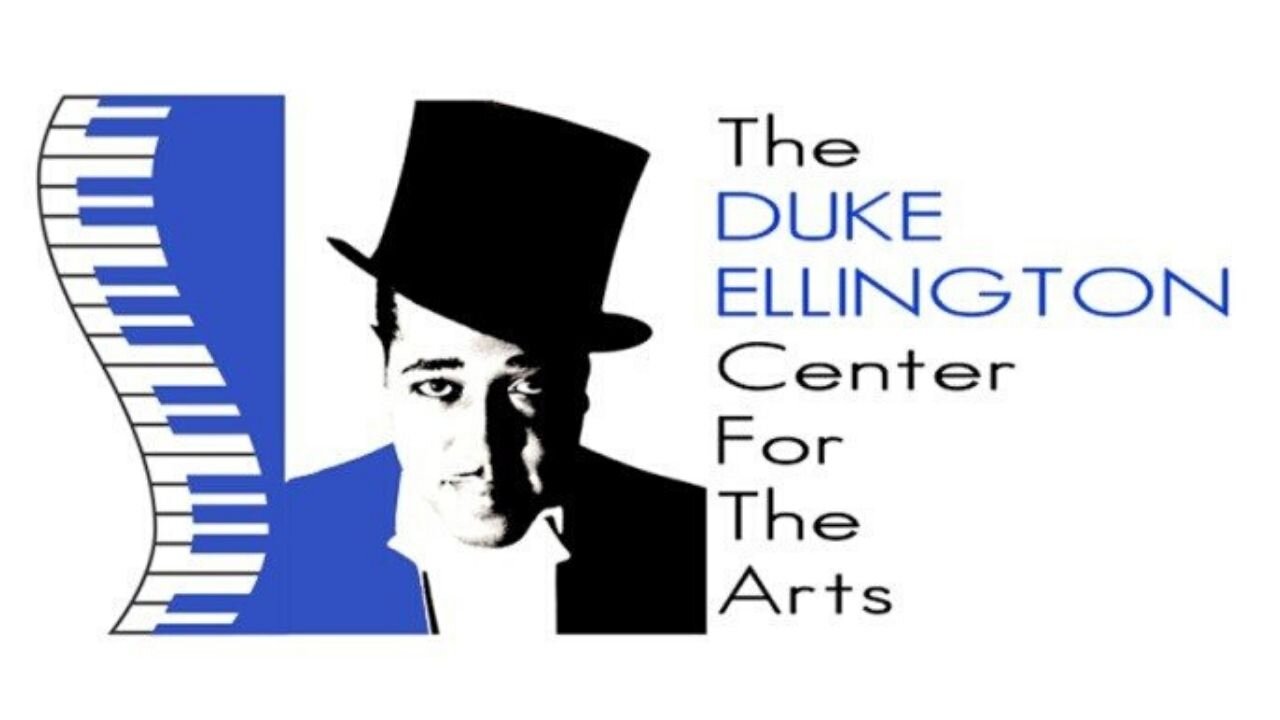
Duke Ellington
Duke Ellington called his music “American Music” rather than jazz, and liked to describe those who impressed him as “beyond category.” He remains one of the most influential figures in jazz, if not all American music, and is widely considered one of the twentieth century’s most prolific composers and best-known African American personalities. He is often credited for giving American music its own sound for the first time, and influenced millions of people both at home and around the world.
As both a composer and bandleader, Ellington's reputation increased since his death, with the continuous thematic repackaging of his signature music, often becoming best sellers. Posthumous recognition of his work includes a special award citation from the Pulitzer Prize Board. Duke Ellington Milestones include:
President Lyndon Johnson presented Duke Ellington with the President’s Gold Medal in 1966.
President Richard M. Nixon presented Duke Ellington with the Medal of
Freedom in 1969.Duke Ellington received 13 Grammy Awards.
Duke Ellington received the Pulitzer Prize
He was awarded the French Legion of Honor in 1973.
The United States Post Office issued a Commemorative Stamp with his
image on it in 1986.
NYC Landmark Preservation Commission: 935 St. Nicholas Avenue
Located prominently at the corner of West 157th Street and St. Nicholas Avenue in Hamilton Heights, Manhattan, 935 St. Nicholas Avenue is a Gothic Revival style brick and limestone apartment building designed by Gronenberg & Leuchtag in 1915. Along with its intact historic architectural character, the building is culturally significant as the home to Edward Kennedy “Duke” Ellington
Born in Washington, D.C., Duke Ellington (1899-1974) was one of America’s most innovative and prolific jazz orchestra leaders from the start of his career in New York in 1923 until his death in 1974. Ellington is best remembered for the over 3,000 songs that he composed during his lifetime. In 1939, Ellington moved into an apartment at 935 St. Nicholas Avenue with his family. During his time in the building in the 1940s and 1950s, Ellington wrote many songs that have become American jazz standards, such as “Sophisticated Lady,” “Satin Doll;” “Don’t Get Around Much Anymore,” and “I Let a Song Go Out of My Heart.” Ellington also composed musical suites consisting of pieces linked by subject matter, including “Black, Brown and Beige” (1943), a portrayal of African American history; “Liberian Suite” (1947); and “A Drum Is a Woman” (1956), and created music for film and television scores. Ellington received accolades and awards throughout his illustrious career. He was on the cover of Time Magazine in 1956 while he lived on St. Nicholas Avenue and would later be awarded the Grammy Lifetime Achievement Award in 1966 and the Presidential Medal of Freedom in 1969, among many other honors.
Duke Ellington at the Smithsonian
Smithsonian Guide to the Duke Ellington Collection
The exhibition held in 2009 examined two jazz standards, each one its author’s most-recorded piece: Caravan, written in 1936 by Duke Ellington and Juan Tizol, and Take the "A" Train, composed in 1941 by Billy Strayhorn. Caravan debuted with a combo that included Ellington and was led by his clarinetist Barney Bigard, and "A" Train was premiered by the Duke Ellington Orchestra. In addition to many recordings made by Ellington, Caravan has been recorded by other musicians more than 1,100 times and "A" Train more than 900 times. Click here to see online version of the exhibition and click here for the recordings.

